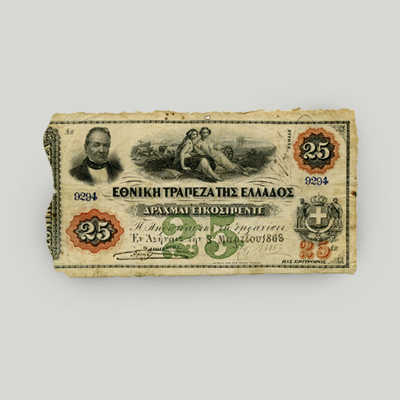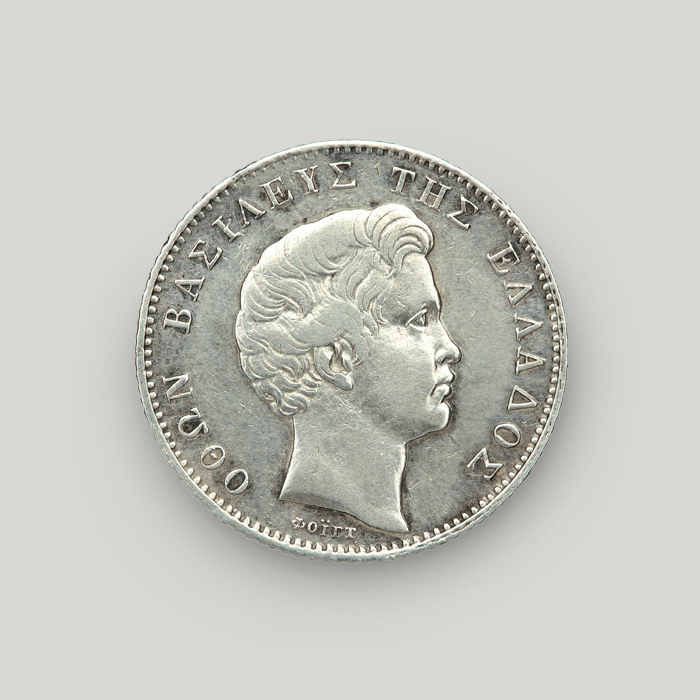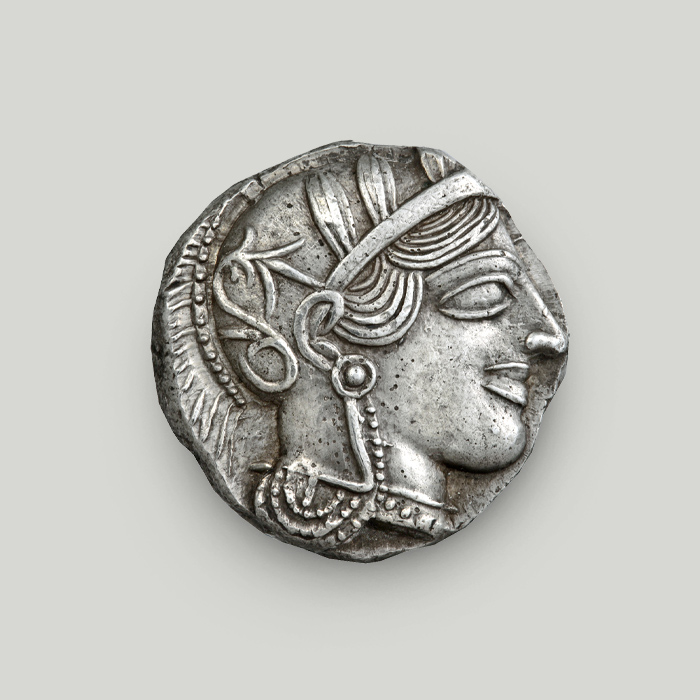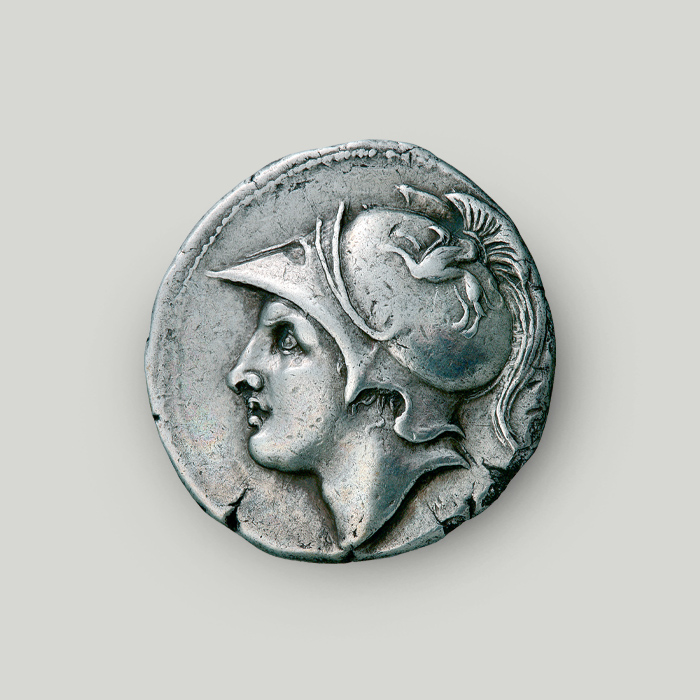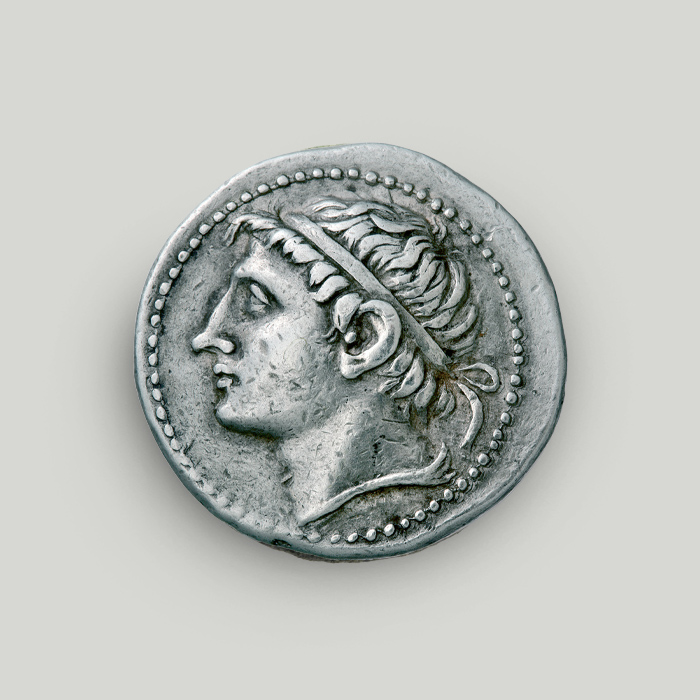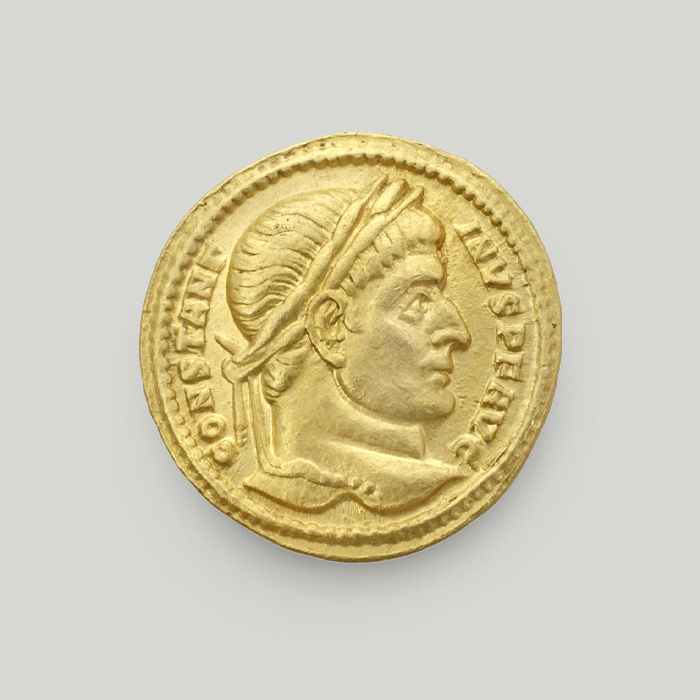10-phoenix banknote, 1831
In 1829 the 4th National Assembly established the silver phoenix as the first currency of the young Greek state. The 10-phoenix banknote of 1831 was the first effort to issue paper money in the newly established state. All the paper phoenix banknotes were printed in the Aegina mint, on the island where the first Ancient Greek coin had also been minted.
Face
Denomination in numerals and words, reference to Resolution 27 (KZ), printed date, handwritten serial number and signatures by 2 members of the Committee. These identifiers are enclosed in a decorative border.
The irregular cut on the left side served for checking whether the note was genuine and discouraged counterfeiting.
Back
Handwritten denomination in words, inspector signature and banknote serial number, reduced by 500 compared to that on the face.
Kapodistrias in Greece
Ioannis Kapodistrias was elected temporary Governor of the newly liberated Greek state on 3 April 1827. He arrived in Nafplion on 6 January 1828, but immediately moved to Aegina.
The need for a new currency
It was Kapodistrias’ first priority to sort out public finances and establish a national currency.
In 1829 the 4th National Assembly established the silver phoenix as the first currency of the young Greek state. The first metal coins were put in circulation immediately.
At the same time, Kapodistrias also founded the National Trading Bank that, contrary to its name, was not a credit institution but a public fund. In other words, it collected state revenue and used it to fund government operations.
The first banknote
In 1831 Kapodistrias decided to issue the first paper money. Resolution 27 (KZ) of 17 June 1831 introduced the decision to issue 5-, 10-, 50- and 100-phoenix banknotes.
The National Bank Committee was tasked with issuing the notes, which would be then handed to the Finance Committee and, in turn, to the National Fund.
The notes were intended to facilitate the operation of the public fund. According to Article 3 of Resolution 27, at least 1/3 of the value of all transactions with the government had to be carried out using banknotes.
All phoenix banknotes were printed in the Aegina mint, on the island where the first Ancient Greek coins had also been minted. Two members of the Committee signed and numbered the notes by hand.
A premature end for the paper phoenix
People had only ever used metal coins for everyday transactions, and they did not embrace the concept of paper money.
Through Resolution 7 (Z) of 27 January 1832, it was decided that paper phoenix banknotes would no longer be used in transactions. A few months later, they were taken completely out of circulation.
The banknote in our publications
The 10-phoenix banknote of 1831 is mentioned in the book Greek Banknotes. Historical Evidence by Dr Dimitra Tsangari. The publication includes the paper money put in circulation throughout the history of the newly-established Greek state: banknotes, coin notes and relevant material. It spans over 180 years of history. A timeline presents key moments in Greek history that were directly linked to currency circulation.
Buy the publication Greek Banknotes. Historical Evidence on the Alpha Bank e-shop.
The 10-phoenix banknote of 1831 is on display at the Banknote Museum of the Ionian Bank in Corfu, managed by Alpha Bank.
The exhibit is open to the general public. View the Museum opening hours.


